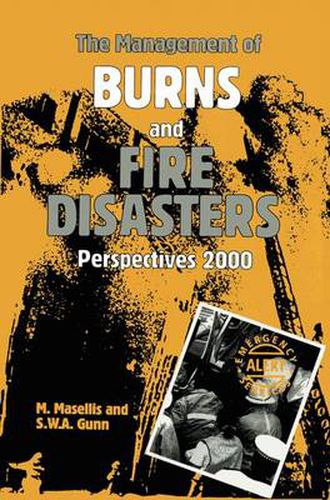Readings Newsletter
Become a Readings Member to make your shopping experience even easier.
Sign in or sign up for free!
You’re not far away from qualifying for FREE standard shipping within Australia
You’ve qualified for FREE standard shipping within Australia
The cart is loading…






This title is printed to order. This book may have been self-published. If so, we cannot guarantee the quality of the content. In the main most books will have gone through the editing process however some may not. We therefore suggest that you be aware of this before ordering this book. If in doubt check either the author or publisher’s details as we are unable to accept any returns unless they are faulty. Please contact us if you have any questions.
This volume is published with a triple aim: to take a look back over the advances during the ten years of the Mediterranean Burns Club and mark its anniversary; to follow up and strengthen the successful twin ning of burns as a clinical, individual illness problem and fires as a societal, disaster management problem; and to look ahead at the per spectives of burn care and fire prevention in the fast-approaching new century. The occasion also marks the tenth annual presentation of the prestigious G. Whitaker International Burns Prize, to which the Mediterranean Burns Club acts as the scientific fulcrum. The award is now established as the most distinguished recognition in burns science worldwide, and it is gratifying that the contributions of many of the renowned recipients will be found in this book. This is a sequel to The Management of Mass Burn Casualties and Fire Disasters, which contained the Proceedings of the First International Conference on Burns and Fire Disasters. The book and the conference have fully justified the authors’ initial concept that burn specialists, con stantly combatting burn disease and promoting rehabilitation of the victims, especially in mass casualty situations, had for too long remained separate from that other essential sector, the fire-fighting authorities and fire prevention systems, whose aim is also the protection of the individual and the promotion of safety. This long overdue synergism has now become reality, and the present volume strengthens this desirable trend.
$9.00 standard shipping within Australia
FREE standard shipping within Australia for orders over $100.00
Express & International shipping calculated at checkout
This title is printed to order. This book may have been self-published. If so, we cannot guarantee the quality of the content. In the main most books will have gone through the editing process however some may not. We therefore suggest that you be aware of this before ordering this book. If in doubt check either the author or publisher’s details as we are unable to accept any returns unless they are faulty. Please contact us if you have any questions.
This volume is published with a triple aim: to take a look back over the advances during the ten years of the Mediterranean Burns Club and mark its anniversary; to follow up and strengthen the successful twin ning of burns as a clinical, individual illness problem and fires as a societal, disaster management problem; and to look ahead at the per spectives of burn care and fire prevention in the fast-approaching new century. The occasion also marks the tenth annual presentation of the prestigious G. Whitaker International Burns Prize, to which the Mediterranean Burns Club acts as the scientific fulcrum. The award is now established as the most distinguished recognition in burns science worldwide, and it is gratifying that the contributions of many of the renowned recipients will be found in this book. This is a sequel to The Management of Mass Burn Casualties and Fire Disasters, which contained the Proceedings of the First International Conference on Burns and Fire Disasters. The book and the conference have fully justified the authors’ initial concept that burn specialists, con stantly combatting burn disease and promoting rehabilitation of the victims, especially in mass casualty situations, had for too long remained separate from that other essential sector, the fire-fighting authorities and fire prevention systems, whose aim is also the protection of the individual and the promotion of safety. This long overdue synergism has now become reality, and the present volume strengthens this desirable trend.